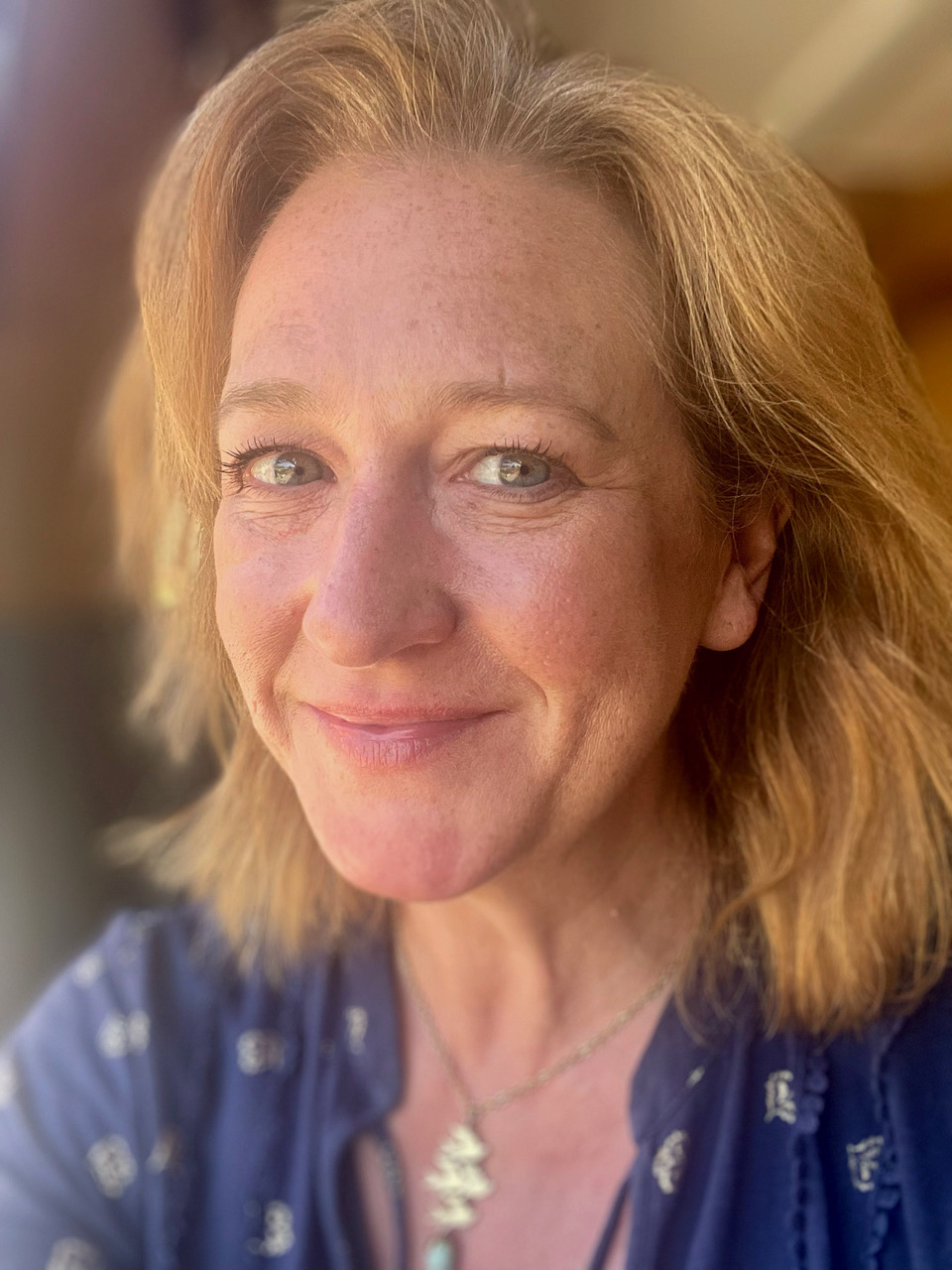The mysterious case of Country Life's cursed photographs and other spooky stories from our archive
Melanie Bryan delves goes in search of the spookiest stories in the Country Life Archive.
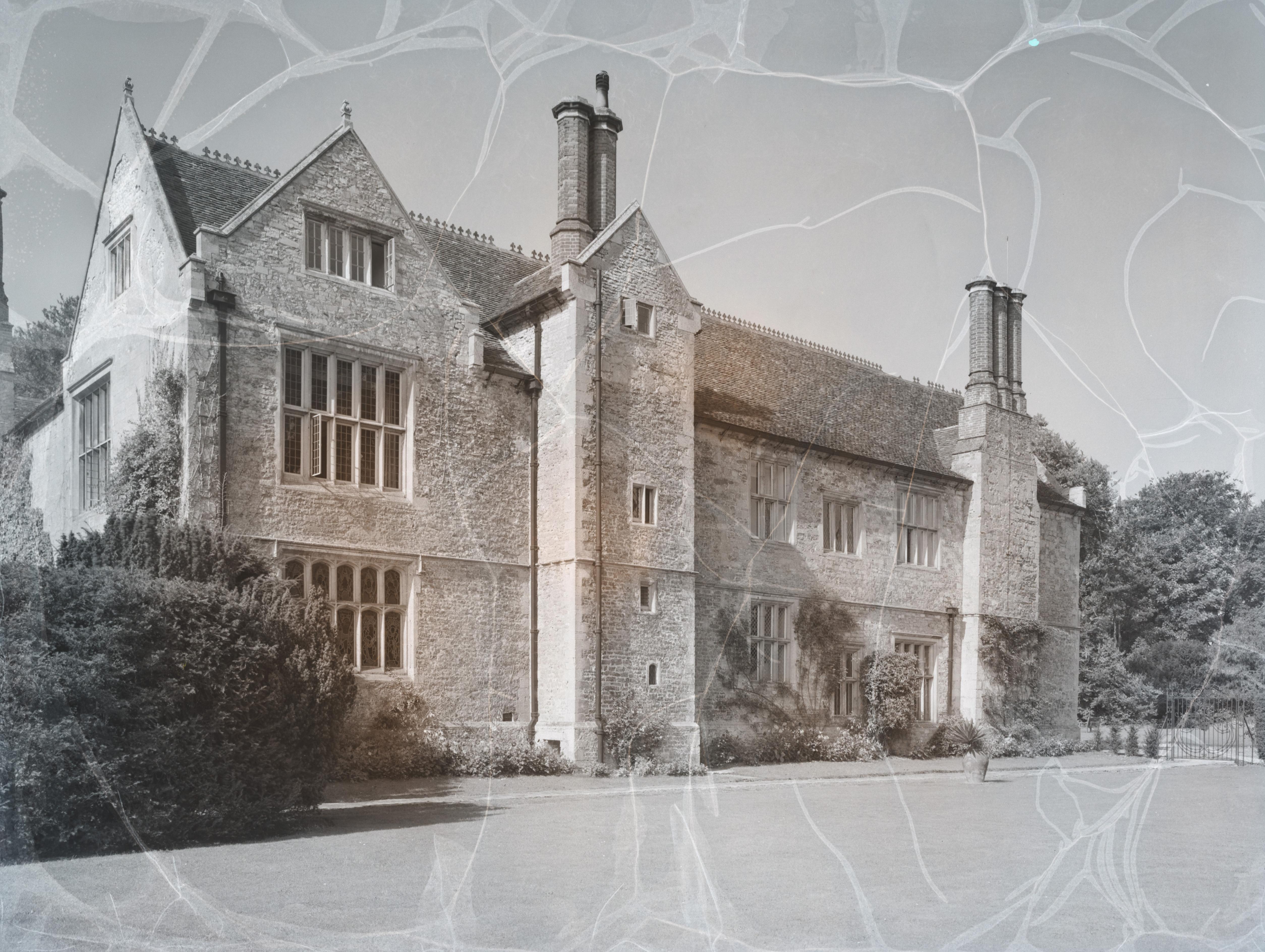

All Hallows' Eve or Hallowe’en traditionally marked the end of autumn and the beginning of winter. The ancient Celtic festival was celebrated with huge fires, lit across the land in order to help strengthen the sun (it has tinges of what we now do to mark Bonfire Night on November 5).
For centuries, and across most of Northern Europe, nuts played a pivotal role in divination during Hallowe’en. Young courting couples, or individuals who desired to court a specific individual, would place two hazelnuts side-by-side in a fire. If the nuts cracked and hissed and burst, the same would happen to that romance. If they lay still and burned quietly and brightly, the couple would be true and faithful lovers forever. If only real life were that simple.
It was also a tradition to recount stories of otherworldly happenings around the comfort of the fire — something that continues to this day. A trip into the Country Life Archive reveals numerous spectral and downright scary happenings from all corners of our land. So sit back in a darkened room (if you dare), and enjoy a few of the ghostly tales from the pages of our historic magazine.
Correspondence: The spectre horseman
September 21, 1907
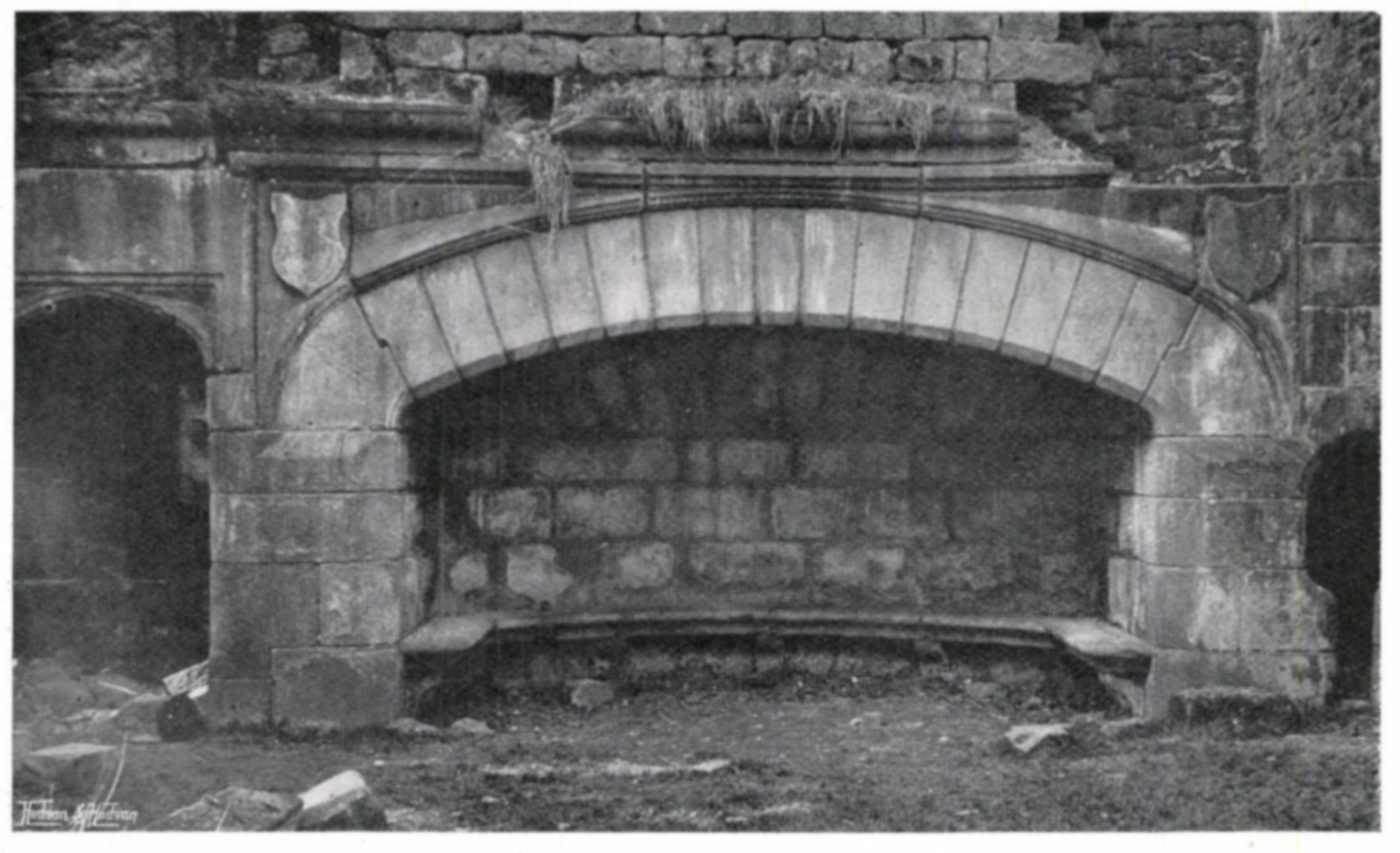
The old fireplace at Wycollar Hall, as seen in 1907.
Sir, I hope the following notes on an old house may be of interest to your readers: Wycollar Hall, near Colne, was long the seat of the Cunliffes of Billington. They were noted persons in their day, and the names of successive member of their family are attached to documents relating to the property of the Abbots of Whalley.
But evil days came, and their ancestral estates passed out of their hands. In the days of the Commonwealth, their loyalty cost them dear; and ultimately they retired to Wycollar with a remnant only of their once extensive property.
About 1819 the last of the family passed away, and now the hall is a mass of ruins. Little but the antique fireplace remains entire; and even the room alluded to in the following legend cannot now be identified. Tradition says that once every year a spectre horseman visits Wycollar Hall. He is attired in a costume of the early Stuart period, and the trappings of his horse are of a most uncouth description
Exquisite houses, the beauty of Nature, and how to get the most from your life, straight to your inbox.
On the evening of his visit the weather is always wild and tempestuous. There is no moon to light the lonely roads, and the residents of the village do not venture out of their cottages. When the wind howls loudest the horseman can be heard dashing up the road at full speed, and, after crossing the narrow bridge, he suddenly stops at the door of the hall. The rider dismounts and makes his way up the broad oaken stairs into one of the rooms in those. Dreadful screams, as from a woman, are then heard, which soon subside into groans. The horseman then makes his appearance at the door, at once mounts his steed, and gallops off by the road he came.
His body can be seen through by those who may chance to be present; his horse appears to be wild with rage, and its nostril stream with fire. The tradition is that one of the Cunliffes murdered his wife in that room, and that the spectre horseman is the ghost of the murderer, who is doomed to pay an annual visit to the home of his victim.
Anonymous
Editorial: Cold Baby
August 26, 1949
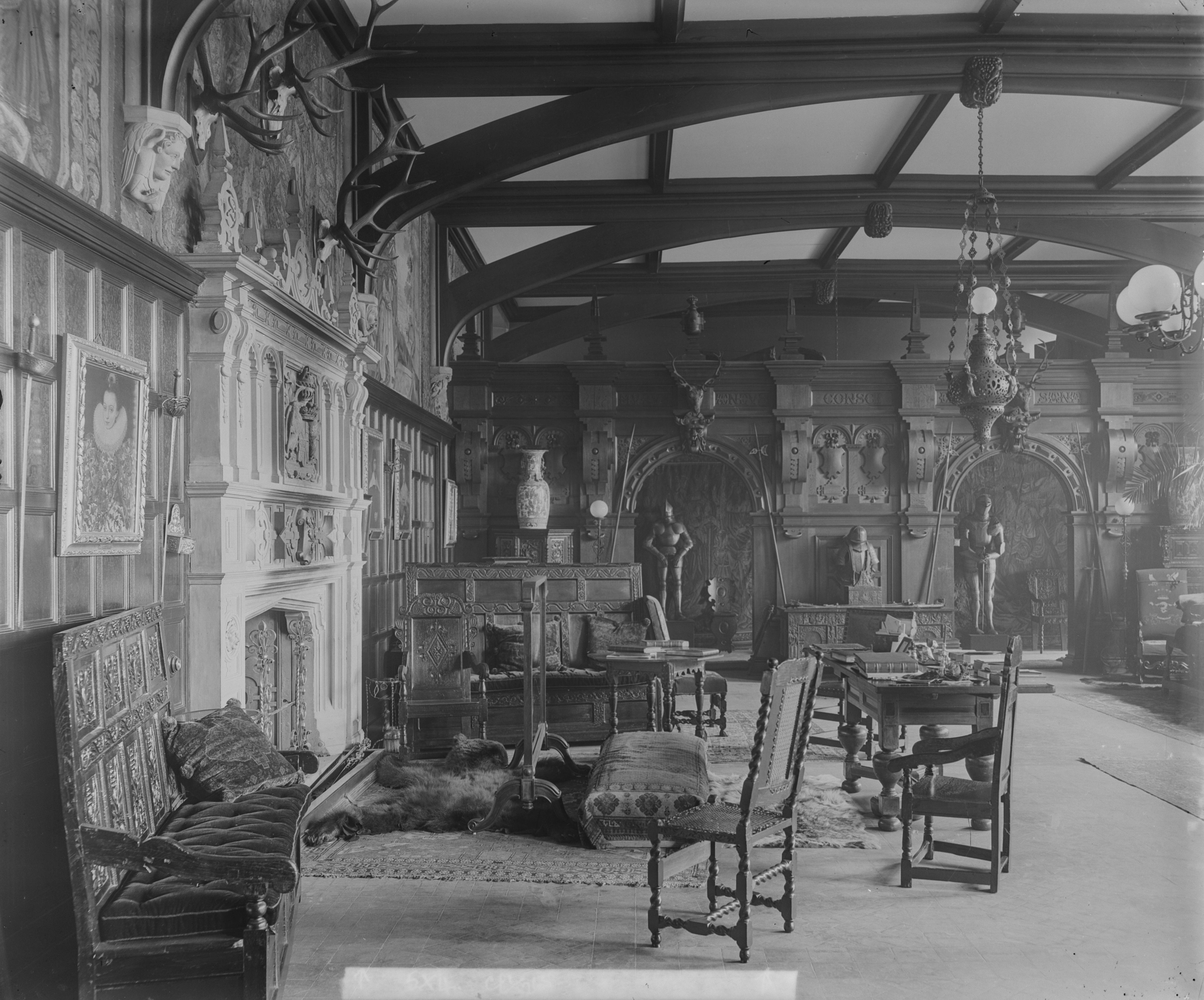
Parts of Rufford Abbey did survive the Town and Country Planning Act, but it is not known if the Cold Baby stayed on to play more pranks on the unsuspecting occupants.
'Rufford Abbey, which has been reprieved from demolition for three months under the Town and Country Planning Act, was long the home of the Savile’s, the Earls of Halifax, and is a romantic rambling house of many dates from monastic to Stuart times.
The contents were sold some years ago and occupation by the Army has left it in a deplorable state. The Coal Board of Ministries who might buy it are apparently deterred by the £40,000 needed to make it habitable, and possibly by a mischievous ghost that is said to haunt the house.
During a shooting party there some years ago, four guests, including the late Lady Bradford and the late Duke of Marlborough, were playing bridge after dinner when, after several hands, Lady Bradford misdealt twice. The pack, which had already been played with, was found one short, and there was no sign of the missing card. Lady Savile, coming in at that moment, and seeing the players’ perplexity, said, "I am so sorry; it’s that boy again. He is always hiding things," and produced the card out of a drawer on the other side of the room. "He is called the Cold Baby," she continued. "Sometimes he gets into one’s bed and tries to push one out." One would like to think of him having fun with Civil Servants’ files or giving a Fuel Controller the shivers.'
Correspondence: The missing skulls
January 10, 1963
Sir, The missing skulls referred to by Mr M. Buckley in his letter of December 13 are housed in Turton Tower, near Bolton, Lancashire, which is now a folk museum. Alderman G. H. Ashworth has recorded their history as follows:
‘Many years ago, about 1750, two skulls, male and female, were dug up or fished out of Bradshaw Brook and placed on the mantlepiece of Timberbottom Farm.
‘Presently some demonic influence began to work. At intervals strange noises were overheard, crockery rattled, the domestic animals displayed a strange fear, and heavy footsteps were heard ascending the stairs. They were followed as far as the upstairs room, where in a ghostly light two men seemed to be engaged in battle, while the ghostly form of a girl was watching them till she eventually left the scene.
‘This was more than the poor farmer could endure, so the skulls were decently interred in Bradshaw Churchyard about the year 1840. But even this did not seem to cure the disturbances, so the skulls were dug up and placed on the family Bible at Bradshaw Hall.
‘This was more effective and it was hoped that the mischievous spirit was at long last safely laid, but no. Not long ago, one of the skulls had to be sent away for repairs to the stand on which it was mounted. Presently the same trouble in a slightly less malevolent form reappeared, and order was not restored until the skull was safely housed in its old quarters.’
P. W. Townsend
Correspondence: The bewitched tanner's house
July 8, 1954
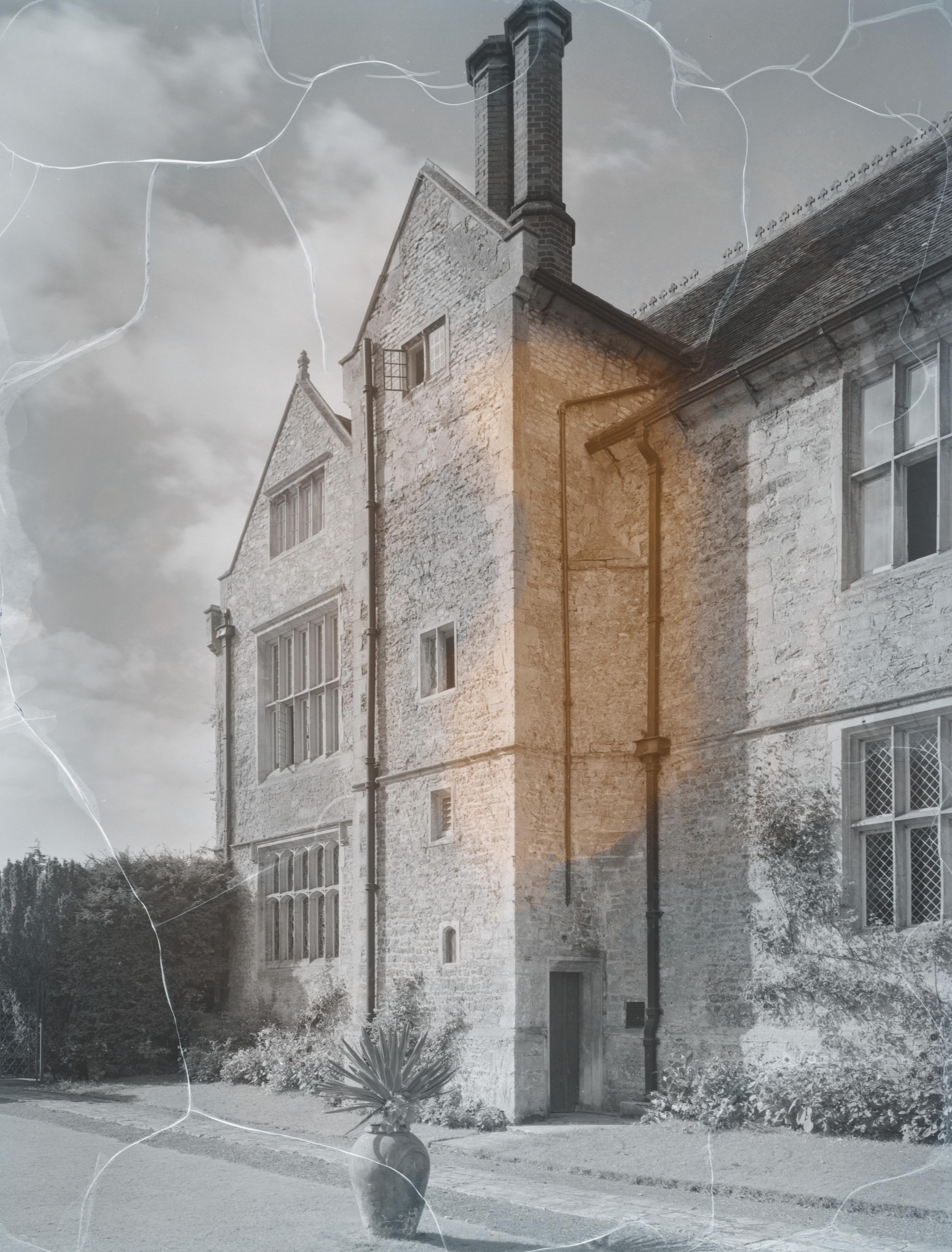
Eerily, some of Country Life’s negatives depicting Sawston Hall have suffered a similar fate to its inhabitants. The have developed 'vinegar syndrome', with foxing and cracking clearly visible on the surface...
Sir, Among the family papers preserved at Sawston Hall, Cambridgeshire, recently described in your pages, there is a letter, which came to light recently, describing some curious happenings which caused a stir in the village 150 years ago.
The house of Mr Adams, the tanner, was 'bewitched' by a poltergeist, but the letter shall be left to tell it’s own story. It is dated October 7, 1804, and was addressed to Major Richard Huddletston, then serving with the Cambridge Militia by his sister Jane:
‘I am going to tell you such an odd history of Mr Adam the tanners house being bewitched, that I think it necessary to beg you not to imagine that I have lost my senses and am become quite foolish; but really the occurrence is so singular that the most incredulous after due examination won’t allow it to be the best executed trick that ever was, nor could give a better reason for supposing it to be one than that it cannot be anything else.
‘Mrs Adams, since last Sunday, has her gown torn every day in a manner shoe could not account for, but on Thursday, early in the day, she was obliged to change it; in a short time the one she put on was as much torn as the one she had taken off. So it continued till she had put on five. She then went to Mrs Murphil’s house. No one was there, but Mrs Murphil and Sally Cooper. She told her misfortune and shewed (sic) her gown which was quite whole when she sat down. Upon rising to their astonishment it was slit in several directions. She put on six gowns on Thursday and they were all rent [a large tear in a piece of fabric].
‘Since then almost everyone that has been in the house have had their cloaths (sic) torn, men and women, old Adams’ coats etc. As to a niece that lives with her and her maid servant, their cloaths (sic) have been shivered to rags, and what is extraordinary, James Cooper and Mrs. Jones saw a piece drop off and not a person near or touching it.
‘I have made a visit and escaped, but it is impossible to describe how much some of the cloaths (sic) are torn, quite strong cotton gowns, so that no beggar would accept them. Ned and Mr Portchalor have just been there and escaped, also Mrs. Adams has put on a new gown the morning and it continues whole. It cannot be done that any liquor dropped for their cloaths are evidently rent, tho’ no-one hears them rend.'
Reproduced in 1954 by kind permission of Captain Huddleston of Sawston Hall.
Melanie is a freelance picture editor and writer, and the former Archive Manager at Country Life magazine. She has worked for national and international publications and publishers all her life, covering news, politics, sport, features and everything in between, making her a force to be reckoned with at pub quizzes. She lives and works in rural Ryedale, North Yorkshire, where she enjoys nothing better than tootling around God’s Own County on her bicycle, and possibly, maybe, visiting one or two of the area’s numerous fine cafes and hostelries en route.
